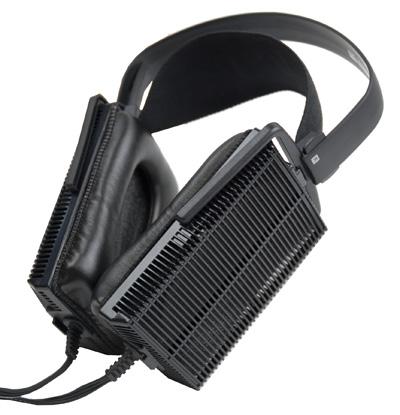

A great pair of headphones is an absolute must for anyone into vinyl records. There's something about losing yourself in a record with a pair of solid headphones and experiencing the details you never heard before.
Japan-based Stax has been putting out some incredible electrostatic headphones since 1960. The unmistakable classic rectangular shape of their Lambda electrostatic "earspeakers" that date back to the late 1970s are sure to make a great addition to your analog setup. Four of their 7 electrostatic earspeakers (SR202 shown top right, SR303 shown top left, SR404, and SR404 Limited) feature this open-air design where the rectangular headphones are padded and angled slightly to optimize the sound that reaches your ear.
Yes, they're expensive and require their own 5-pin headphone amp (also expensive). A combination of the lowest price SR 202 + amp will set you back close to $1000. Here's a bit about Stax:
Stax Ltd. was founded in 1938. Twenty-two years later in 1960, Stax released their first electrostatic earspeaker, the Stax SR-1. Over the following thirty-six years Stax produced a variety of amplification, earspeaker, tonearm, CD player, DAC, phono cartridge and loudspeaker products. In 1995, fifty-five years after the company's foundation, Stax went bust. The company was revived in 1996 as the new STAX company.
So what exactly are electrostatic headphones?
Traditional headphone use a moving coil technology where a larger magnet creates a static electromagnetic field. An audio current is passed through a voice coil that is attached to the diaphragm. This reacts against the static electromagnetic field from the larger magnet, causing the diaphragm to move the art and thus create the sound.
In an electrostatic headphone, a thin, electrically charged diaphragm sits between two perforated metal electrode plates. An electrical sound signal is applied to the electrodes creating an electrical field. Depending on the polarity of this field, the diaphragm is drawn towards one of the plates. Air is forced through the perforations and combined with a continuously changing electrical signal driving the membrane, a sound wave is generated.
This design results in a better sound quality when compared to moving coil headphones.
Anyone have a pair of these and care to share more?